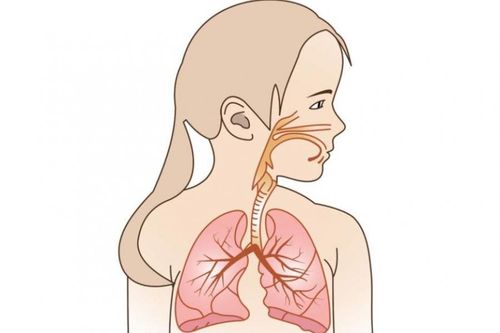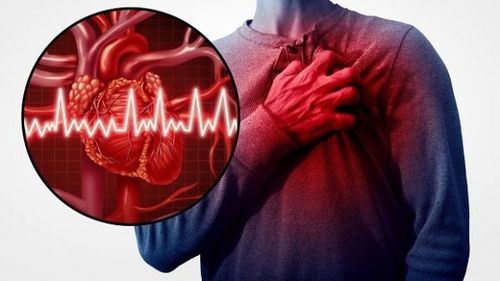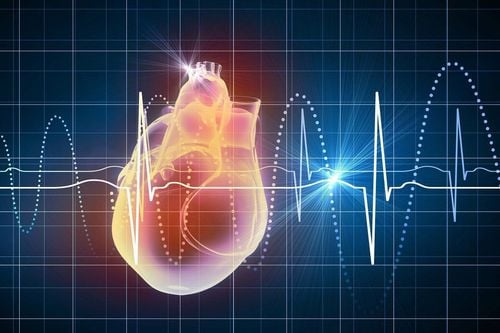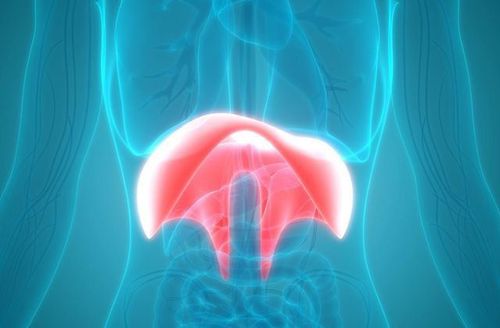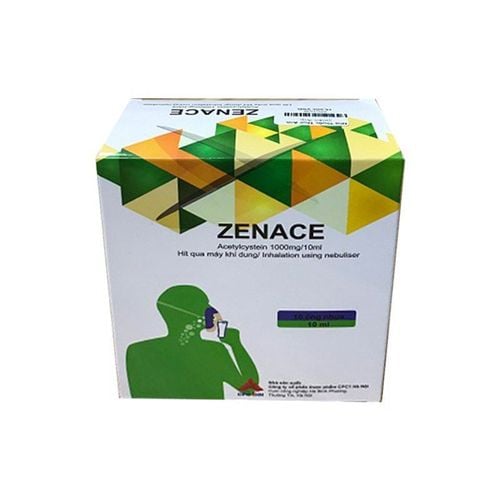This is an automatically translated article.
Thoracoscopy has many advantages over conventional open surgery, less pain for the patient, smaller incisions are more aesthetic, faster healing and recovery than other surgical methods.
1. What is thoracic surgery to cut and suture air cysts?
Pulmonary cysts appear in the lungs and can cause compression and collapse of the lungs, leading to airway obstruction and affecting the patient's respiratory function.
Air cysts can grow larger over time, if not treated promptly, the patient will have difficulty breathing, the rupture of the air cocoon can cause pneumothorax and lead to death.
Thoracoscopy is a minimally invasive surgical method into the lungs with the help of endoscopic equipment, video monitors and specialized endoscopic instruments.
This technique is used to treat cysts when the lung parenchyma, may or may not have ruptured. This method has advantages such as: Small incision, no rib ball, more aesthetic, less pain for the patient and quick recovery time.
1.1 Indications for thoracoscopic surgery to cut and suture thoracic air cysts
This surgery is indicated for the following cases:
Pneumothorax due to rupture of air cocoon and conservative treatment does not give satisfactory results, ie air continues to leak out after 48 hours. Spontaneous pneumothorax due to rupture of the air cocoon in high-risk patients such as pilots and divers. Pneumothorax due to recurrent rupture of air cysts. The doctor found air bubbles on the patient's CT film, possibly unruptured air cysts.
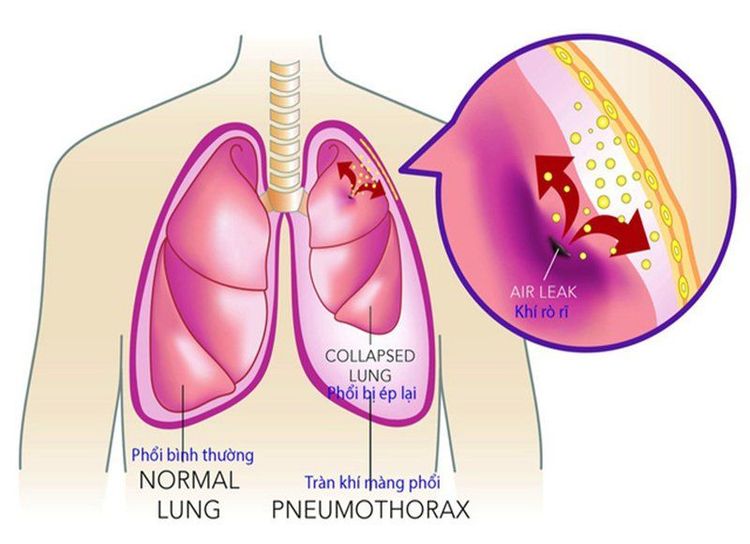
Bệnh nhân tràn khí phổi cần được phẫu thuật nội soi
1.2 Contraindications
Depending on the conditions of each surgical facility, the doctor should carefully appoint surgery when the patient has the following parameters:
The patient has damaged opposite lung and cannot conduct ventilation of one lung. Having severe systemic disease such as: infection in other organs, blood disease, severe chronic disease, lung is heavily attached, cannot create space for endoscopy.
2. How to prepare for thoracic surgery to cut and sew air cysts?
2.1 Preparation
Surgical team: Includes a surgeon who is a specialist, 2 assistants with 1 instrument and 1 running outside the specialty. Anesthesia team: Includes an anesthesiologist and 12 assistants. Technical operation crew: Ensure quick fix if there is a problem with the machinery system serving the surgery.
2.2 Means
Surgical instruments: Chest opening and closing kits, major surgery kits for thoracic surgery, specialized tools for thoracoscopy. Endoscopy facilities: Endoscope system, automatic cutting tools. Anesthesia equipment: Anesthesia kit for thoracic surgery, anesthetic and cardiovascular resuscitation drugs, double-bore tracheal tube.
2.3 Patient
On the patient's side, the doctor will carefully explain the surgery as well as advise the patient on what to do before the surgery such as cleaning, using prophylactic antibiotics, anesthesia examination... Besides, it is also necessary to complete legal documents and medical records as prescribed.
2.4 Endoscopic technique of cutting and suturing pneumothorax
First, the patient needs to be anesthetized with a double-lumen endotracheal tube. During that time, continuously monitor the electrocardiogram and the oxygen saturation in the capillaries. Place 2 peripheral and central intravenous lines. Have the patient breathe with a 100% oxygen machine. Insert the patient's urinary catheter. Position the patient, palpate the chest, disinfect and spread.
2.4.1 After getting ready, the doctor will perform the surgical technique
Pair, cut and then suture the lung parenchyma with lesions, treat by excision with a lung stapler, column - suture the lung. Inflate the lung to check the integrity of the nonoperative lung. Pour sterile serum into the pleural cavity and inflate the lung for examination. If the baby has gas coming out, it must be sewn up immediately. Stop bleeding and pump the patient's chest. Place 2 silicone drains into the pleural space and continuously drain the co-aspirator immediately after placement to avoid blood clots. After the lungs have expanded well, close the trocar holes and incision.
2.4.2 Follow-up after surgery
The patient will be tested for blood gases, blood count, liver and kidney function, hematocrit and X-ray at bed after about 15 - 30 minutes after returning to the recovery room. Continuous hemodynamic monitoring by monitoring, monitoring of drainage, respiration and urine with a frequency of 30 minutes - 1 hour within the first 24 hours after surgery or longer depending on the patient's condition.
Patients are used antibiotics to prevent infections, along with heart medications, analgesics and diuretics in combination with blood transfusions and blood replacement solutions. The doctor will have a reasonable method depending on the hemodynamic status and laboratory parameters.
3. Possible complications and how to handle them
3.1 Bleeding after surgery
Need to adjust coagulation, if necessary, re-operation for emergency hemostasis may be indicated if the bleeding is more than 100 ml/hour and hemodynamic disturbances or bleeding is greater than 200 ml/hour within 3 consecutive hours.
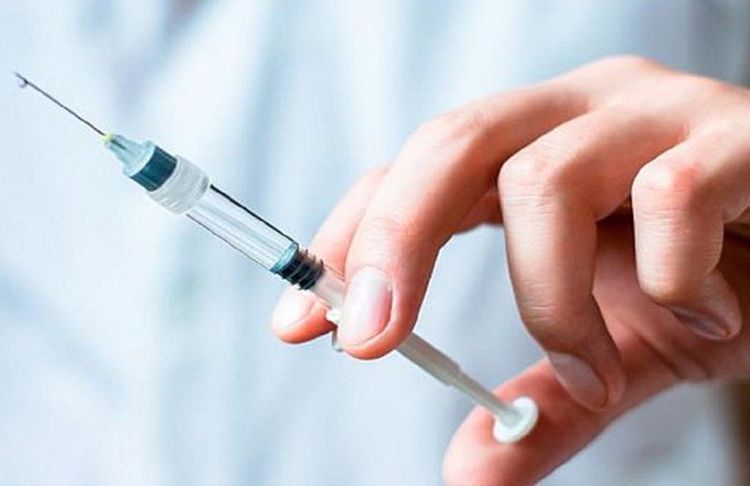
Bệnh nhân được chỉ định đông máu nếu bị chảy máu sau mổ
3.2 Lung collapse after surgery
If the patient is not breathing well or has a large sputum obstruction after surgery, the phenomenon of atelectasis may occur. Clinical symptoms include: Shortness of breath, decreased alveolar murmur, fever. On X-ray, the image shows atelectasis of the lung.
First need to relieve the patient's pain, use systemic antibiotics, the patient needs to sit up and shake, cough and sputum widely. If necessary, a tracheostomy may be performed.
3.3 Recurrent gas leak
This complication occurs due to the mismanagement of lesions associated with pulmonary fibrosis.
Laparoscopic surgery to cut and stitch air cysts needs to be performed at a reputable medical facility, with modern equipment and a team of skilled medical professionals to ensure safety as well as take appropriate measures. timely handling when the worst case occurs.
All questions need to be answered by a specialist doctor as well as customers who need examination and treatment at Vinmec International General Hospital. You can contact Vinmec Health System nationwide or register online HERE.




